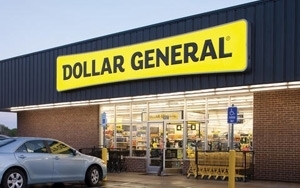retail
In Dollar Dust-Up, Marketing To Poor Gets New Focus
- by Sarah Mahoney @mahoney_sarah, August 29, 2014

Observers can be forgiven if they need a scorecard to keep up with the commotion in the dollar store category: The latest development is that Dollar General intends to persist in its $9 billion pursuit of Family Dollar — despite some antitrust hurdles.
Family Dollar, meanwhile, would prefer to take the $8.5 billion offer it has gotten from Dollar Tree. And all that is happening at a time when both Walmart and Target, who also sell plenty of stuff to lower-income shoppers, are struggling with declining traffic and looking for ways to woo strapped shoppers back into their stores.
With the economic recovery breathing new life into luxury marketing, it’s easy to overlook the shifting demographics among poorer consumers. “The dollar channel continues to grow because it's so well aligned to the needs of the core, low-income shopper,” says Mike Paglia, director of retail insights for Kantar Media.
“These are individuals who are living paycheck to paycheck and have a finite amount of money they can spend on consumables. They're not necessarily looking for a good deal, or the best price per ounce. Instead they want the lowest price on an item, period. The limited assortment in a dollar store means that the low income shopper is less tempted by the vast assortment they might encounter at a big box store.”
Dollar stores have also gained in popularity among many better-heeled consumers because they are more convenient. “Dollar stores are a quick trip, taking less than 10 minutes, or about half the time your average trip at a Walmart takes,” he tells Marketing Daily in an email. “Shoppers new to dollar stores are often surprised that they can get the exact same items that a big-box store would carry but at a significantly lower price.”
The Food Marketing Institute says dollar stores, along with other nontraditional formats, continue to chew away at conventional grocers, as well as stores like Walmart and Target. It says dollar store sales have climbed from $272 per square foot in 2000 to $337 in 2010. “And since 1995, the dollar channel has built an additional 58 million square feet," it reports.
But while the category is still expanding, it’s no slam-dunk, as Dollar General’s results show: Same store sales gained just 2.1% in the recent quarter. “Growth moderated as we moved through June and July,” says CEO Rick Dreiling in its release, “given the competitive environment and a consumer who, although resilient in the face of economic uncertainty, remains cautious with her spending.”


